Have you ever struggled to understand your NDIS plan and what each section means in relation to your goals?
Just like many others have experienced, it can be confusing navigating the new world of NDIS supports and terminology, let alone understanding what is and isn’t covered by your plan.
At Aspect Plan Management, we look to provide you with the knowledge to set you up for success when maximising your NDIS budget.
Your NDIS plan will contain up to three main support budgets: Core, Capital and Capacity Building (not all plans contain all of the categories). Each category is broken down into subcategories.
The following information provides a basic guide to the main categories and sub-categories in your plan and how you can utilise the different parts of your budget.
Core Supports Budget
Core Supports help you with everyday activities, your current disability-related needs and to work towards your goals. Your Core Supports budget is the most flexible, and in most cases, you can use your funding across any of the following four support categories.
The following examples highlight some of the supports which can be funded in each category:
Core 01 – Assistance with daily life: Examples include assistance with showering, dressing, shopping, household cleaning/other domestic tasks and house/yard maintenance.
Core 02 – Transport: This support category provides funding for transport where you are unable to travel by yourself or use public transport. Examples include travel to work or other places that will help you pursue the goals in your plan.
Core 03 – Consumables: Everyday items you may need. For example, continence products, equipment to improve your independence and/or mobility, or low-cost assistive technology (<$1500) such as modified cutlery. You may also use consumable funds for minor repairs to aids and equipment (assistive technology). An example is repairing a wheelchair tyre puncture.
Core 04 – Assistance with social & community participation: For example, a support worker to help you to participate in social and community activities.
Capital Supports Budget
Capital Supports include more expensive assistive technology items, home or vehicle modifications and funding for one-off purchases you may need (including Specialist Disability Accommodation). It is important to remember that funds within the Capital Supports budget can only be used for their specific purpose and cannot be used to pay for anything else.
The Capital Supports budget has two categories.
Capital 05 – Assistive Technology: With this funding you may be able to purchase equipment for mobility, personal care, communication and recreational inclusion such as wheelchairs or vehicle modifications.
Capital 06 – Home Modifications: Examples of Home Modification include, the installation of an accessible shower, handrails to improve your independence and/or mobility or Specialist Disability Accommodation.
Capacity Building Supports
The aim of Capacity Building Supports is to build your independence and skills to help you pursue your goals. Unlike your Core Supports budget, your Capacity Building funding cannot be moved from one support category to another. Funding can only be used to purchase approved individual supports within that specific capacity building (CB) category.
The common Capacity Building Support categories we see are:
CB 07 – Support coordination: This is a fixed amount for a Support Coordinator to help you use your plan and engage with providers.
CB 09 – Social community and civic participation: Development and training to increase your skills so that you can participate in community, social and recreational activities.
CB 10 – Finding and keeping a Job: Supports may include employment-related support, training and assessments that help you find and keep a job, such as the School Leaver Employment Supports (SLES).
CB 14 – Improved life choices: This funding is a fixed amount for a plan manager to help manage your funds, pay for your supports, track your budget and provide monthly budget reports.
CB 15 – Improved daily living skills: Examples include, assessment, training and/or therapy to help increase your skills, independence and community participation. These services can be delivered in groups or individually.
If your circumstances change at any time during your plan period, your early childhood partner, Local Area Coordinator (LAC) or planner will be able to help you review your support needs and undertake a plan review if required to ensure your plan will suit your new situation.
If you would like to discuss your NDIS plan or would like additional information on how to maximise the use of your funds in your budget, contact Aspect Plan Management on 1300 770 986 or email.
This article is published on Aspect Plan Management and Clickability.






